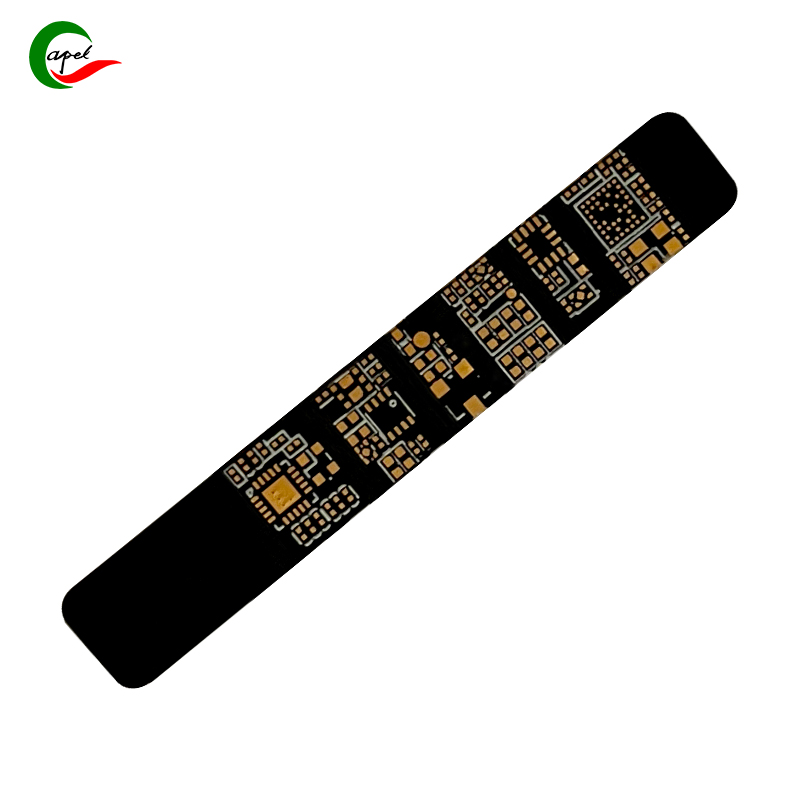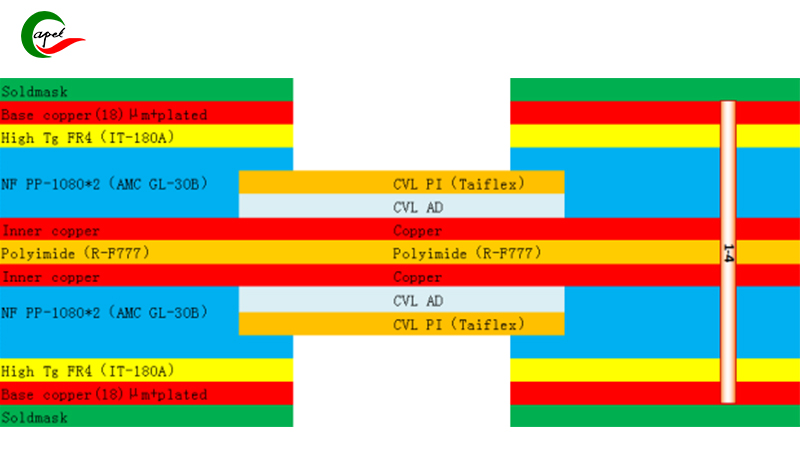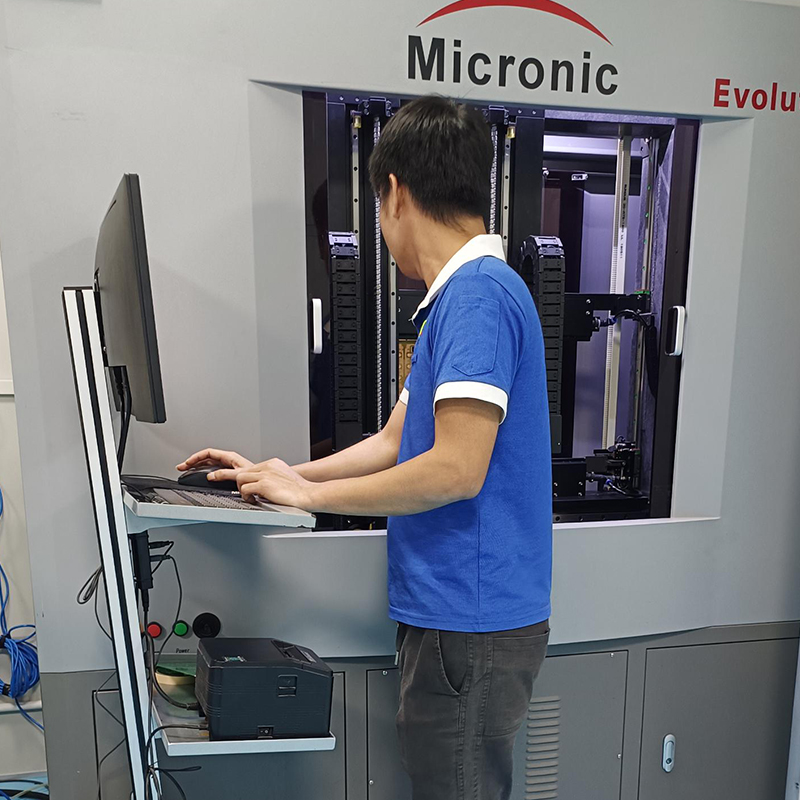Introduction
Explore the key elements of 4-layer FPC flexible PCB design and prototyping in this comprehensive guide. Gain insight into the best practices, prototyping challenges, and manufacturingprocesses for creating cutting-edge FPC flexible PCB solutions.
In the dynamic world of electronic devices and applications, the demand for compact and adaptable printed circuit boards continues to escalate. This article delves into the key areas of 4-layer FPC (Flexible Printed Circuit) PCB design and prototyping, highlighting the importance of adhering to best practices to ensure the best results. It must be emphasized that careful design and prototyping have a profound impact on the efficacy and reliability of FPC flexible PCBs. Here, we proudly showcase our 16 years of expertise in FPC flexible PCB design, prototyping and manufacturing, ensuring our commitment to delivering cutting-edge solutions to our customers.
Understanding 4-Layer FPC Flex PCB Design
4-Layer FPC Flex PCB design requires a detailed understanding of the complexities involved in creating flexible and resilient circuit layouts. This section will comprehensively explain the basic concepts that support FPC flexible PCB design, clarify the importance of 4-layer design in FPC flexible PCB, and outline the key considerations for successful 4-layer FPC flexible PCB design.
Basic knowledge of FPC flexible PCB design includes an understanding of flexible substrates, conductive materials, and design constraints unique to flexible circuits. The molecular structure and flexibility of the substrate material, selection of conductive components, and design parameters play a key role in the functionality and performance of FPC flexible PCBs.
The importance of 4-layer design in FPC flexible PCB lies in its ability to accommodate complex circuit configurations, optimize signal integrity, and facilitate efficient power distribution. Additionally, it provides enhanced thermal management and electromagnetic interference (EMI) shielding. The 4-layer architecture enables designers to integrate complex circuits while retaining the compact form factor necessary for modern electronic applications.
Key considerations for successful 4-layer FPC flexible PCB design include careful attention to signal routing, impedance control, layer stacking configuration and thermal management. Following these considerations enables designers to overcome challenges related to signal integrity, thermal dissipation, and electromagnetic compatibility. By using advanced design tools and methods, designers can fully exploit the potential of 4-layer FPC flexible PCBs to ensure optimal performance and reliability.
4 layer fpc Prototyping Best Practices
The prototyping stage is crucial in the FPC flexible PCB design process. It is a critical stage to verify the design, identify potential problems and improve the circuit layout. This section emphasizes the importance of prototyping and describes best practices for 4-layer FPC flexible PCB prototyping, while addressing common challenges encountered at this stage and providing effective strategies to overcome these challenges.
Prototyping is key to verifying the functionality and manufacturability of FPC flexible PCB designs, allowing designers to identify and correct design flaws before going into mass production. Utilize advanced prototyping technologies such as rapid PCB prototyping and simulation testing to ensure robust and reliable FPC flexible PCB design.
Best practices for 4-layer FPC flexible PCB prototyping center on comprehensive design verification, thorough testing procedures, and utilization of industry-standard prototyping equipment and methods. Employing a systematic prototyping approach, integrated design for manufacturability (DFM) guidance, and close collaboration with prototyping experts enables designers to streamline the prototyping process and accelerate design verification, ensuring timely delivery of refined and manufacturable FPC flexible PCB designs .
Common challenges during the prototyping stage include issues related to material compatibility, dimensional accuracy, and manufacturability limitations. By making careful material selections, leveraging advanced simulation tools for dimensional verification, and adhering to DFM guidelines, designers can effectively address these challenges and achieve a seamless transition from prototyping to manufacturing.
4 Layer FPC Manufacturing Process
The manufacturing process of the 4-layer FPC flexible PCB is the culmination of careful design and prototyping work, reflecting the integration of innovative technology and precision manufacturing technology. This section provides an in-depth overview of the manufacturing process, highlights our extensive experience in 4-layer FPC flexible PCB manufacturing, and illustrates the quality control measures and best practices that are integral in FPC flexible PCB manufacturing.
The key stages of FPC flexible PCB manufacturing include substrate preparation, conductive pattern deposition, lamination, and assembly. A comprehensive understanding of the unique properties of flexible substrates, the application of advanced manufacturing equipment, and the integration of precision assembly technologies are critical to delivering high-quality 4-layer FPC flexible PCBs that meet stringent performance and reliability standards.
Our 16 years of experience in 4-layer FPC flexible PCB manufacturing reflects our commitment to excellence and innovation, underscoring our ability to provide cutting-edge solutions for our customers’ diverse needs. With advanced manufacturing processes, stringent quality assurance protocols and partnerships, we have a proven track record of delivering superior FPC flexible PCB solutions that redefine industry benchmarks.
The implementation of quality control measures and best practices in FPC flexible PCB manufacturing includes rigorous testing procedures, compliance with industry standards, and the deployment of advanced inspection technologies. Every stage of the manufacturing process is rigorously scrutinized to ensure the integrity and reliability of the 4-Layer FPC Flexible PCB, in line with our unwavering commitment to delivering uncompromising quality and performance.
4 Layer FPC Fabrication Process
Conclusion
In summary, the profound impact of adhering to best practices in 4-layer FPC flexible PCB design and prototyping cannot be overstated. Our 16 years of expertise in FPC flexible PCB design, prototyping and manufacturing reflects our commitment to pioneering innovation and providing unparalleled solutions to our customers. We urge readers to leverage our combined capabilities and experience for their FPC flexible PCB needs, confident in our commitment to excellence and unwavering pursuit of driving technological advancement.
By adhering to our core principles of careful design, excellence in prototyping and precision manufacturing, we are poised to elevate the realm of FPC flexible PCB solutions, break new ground and unlock new possibilities for the future of electronic applications. Contact us today to embark on a transformative journey to realize your FPC flexible PCB aspirations and redefine industry benchmarks.
Post time: Feb-24-2024
Back









